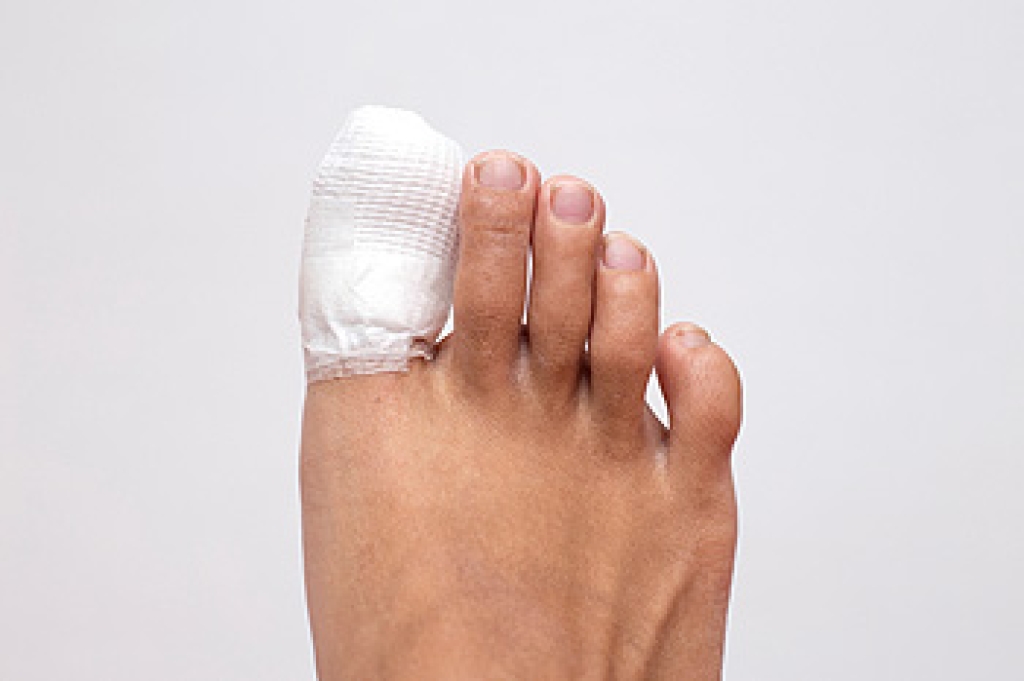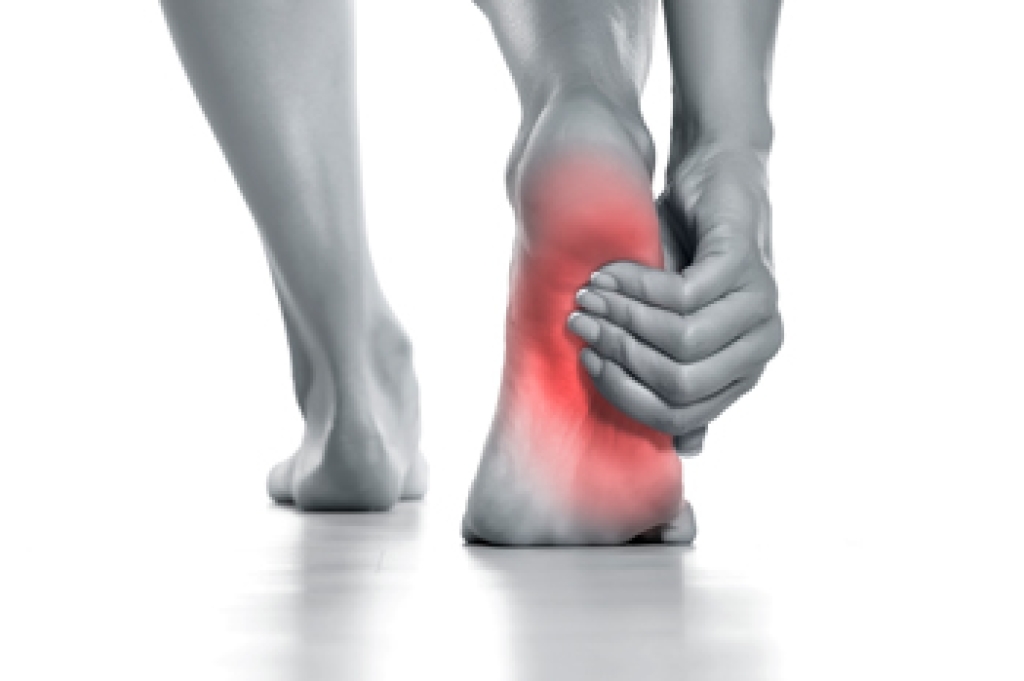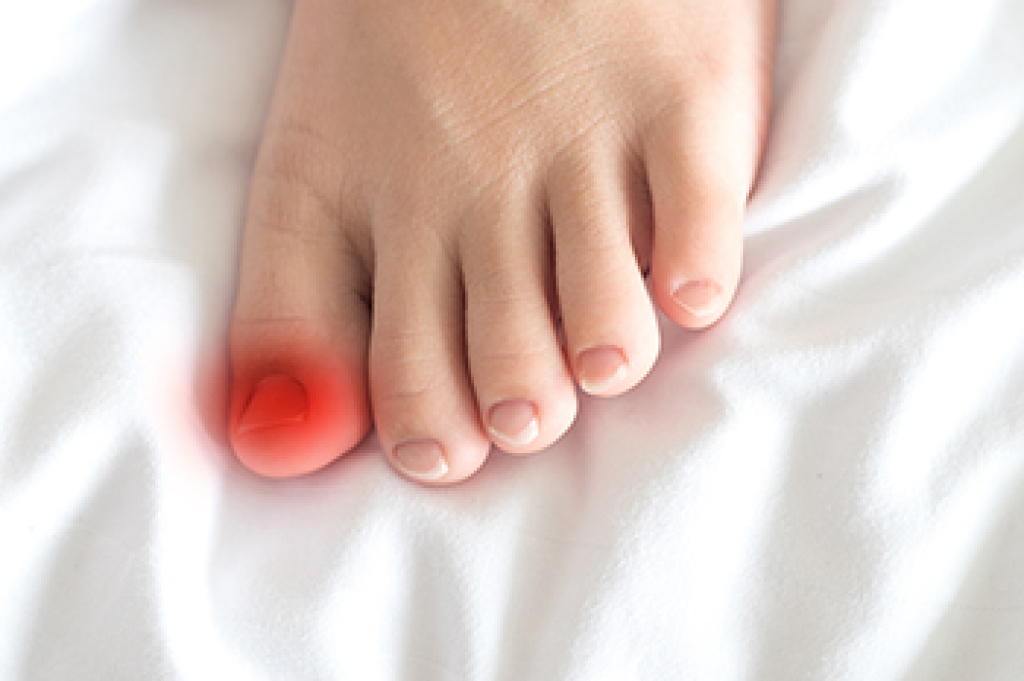Broken Toe Facts

A broken toe often results from stubbing the toe, dropping something heavy on the foot, or direct trauma during sports or physical activity. Symptoms include swelling, bruising, pain when walking, and visible deformity. Some people may mistake a break for a sprain, but a proper diagnosis is essential. A chiropodist can assess the injury through a clinical exam and imaging such as X-rays to confirm the severity. Treatment may involve splinting, wearing protective footwear, and follow-up care to ensure proper healing and prevent complications. Early attention helps avoid long-term discomfort or misalignment. If you suspect a broken toe, it is suggested that you contact a chiropodist for a professional evaluation and a personalized treatment plan.
A broken toe typically occurs following either a sudden, traumatic injury, like dropping a heavy piece of furniture on the toe. The impact causes the bone to fracture and produces a variety of painful symptoms. If you suspect that you’ve broken your toe, please consult with one of the chiropodists from The Footcare Centre. Our chiropodists can help you maintain the health of your lower limbs and your mobility.
Symptoms
- Throbbing pain
- Swelling
- Bruising
- Cracking sound at the time of injury
- Difficulty bearing weight on the toe
- Difficulty walking
- Toe resting at an unnatural angle
Diagnosis
Your chiropodist can diagnose a broken toe through physical examination and imaging studies, such as X-rays.
Treatment
The main goals of treatment are to ensure that the bone heals properly, as a toe fracture that doesn’t heal properly can lead to osteoarthritis. You will typically need to rest the affected toe. You may be prescribed a splint to immobilize the toe while it heals. Icing the affected toe and taking over-the-counter medications can help reduce pain. In cases of severe fractures, surgery may be necessary to reset the broken bones and make sure that they heal correctly.
If you have any questions please feel free to contact our office located in Niagara Falls, ON .
When Your Feet Hurt It Is Time to Pay Attention

Foot pain can develop from many causes, but it rarely happens without reason. Whether it comes on suddenly or grows gradually over time, this type of discomfort often points to an underlying issue with how your foot is moving or what it is being asked to support. With each foot containing dozens of bones, joints, muscles, and ligaments, small imbalances or injuries can lead to pain that affects your entire stride. The body reacts to strain, pressure, or inflammation by sending pain signals, and the foot is especially vulnerable due to the daily forces it absorbs. Pain may originate from soft tissue injuries, overuse, nerve irritation, or systemic conditions like poor circulation or joint problems. Even something as simple as wearing ill-fitting shoes can create long-term stress on the structure of the foot. If symptoms persist or interfere with movement, it is suggested you consult a chiropodist for a professional evaluation and care plan.
Foot pain can have many causes. To receive an accurate diagnosis and treatment for your foot pain, please consult with one of the chiropodists from The Footcare Centre. Our chiropodists will assess your condition and provide you with quality foot and ankle treatment.
Causes
There are a variety of different conditions that can cause foot pain, including:
- Plantar fasciitis
- Deformities, such as bunions or hammertoes
- Injuries to the muscles, bones, tendons, or ligaments in the feet
- Arthritis
- Flat feet
- Ingrown toenails
Symptoms
The type and location of your foot pain can help determine what may be causing it and what type of treatment options are best for you.
Common types of foot pain include:
- Heel pain
- Arch pain
- Toe pain
- Ball of foot pain
- Pain that has a stabbing, burning, or tingling quality
- Pain that is constant, intermittent, or that gets better or worse depending on the situation
Diagnosis
A thorough medical history and physical examination of your feet will be required to determine a diagnosis. Imaging studies, such as X-rays or MRIs may be performed to rule out or confirm certain diagnoses.
Treatment
Treatment will depend on the cause of the pain. Common treatments for foot pain include resting, icing, compressing, and elevating the affected foot, wearing orthotics, or taking anti-inflammatory medications.
If you have any questions please feel free to contact our office located in Niagara Falls, ON .
Symptoms and Risk Factors of an Ingrown Toenail

An ingrown toenail occurs when the edge of the toenail grows into the surrounding skin, leading to pain, redness, and swelling. Common causes include improper nail trimming, tight footwear, or toe injuries. Risk factors include poor foot hygiene, curved toenails, and certain genetic traits. Symptoms may involve tenderness, infection, or drainage surrounding the nail. Left untreated, the condition can worsen and impact daily activities. A chiropodist can provide expert care by relieving pain, addressing the cause, preventing recurrence through proper foot care education, and, if needed, minor procedures. If you are experiencing discomfort or notice signs of an ingrown toenail, it is suggested that you schedule an appointment with a chiropodist who can effectively treat this uncomfortable condition.
Ingrown toenails may require medical attention. If you have significant pain or notice signs of infection from an ingrown toenail, please consult with one of the chiropodists from The Footcare Centre. Our chiropodists will assess your condition and provide you with quality foot and ankle treatment.
What Is an Ingrown Toenail?
An ingrown toenail occurs when the edges of a toenail grow into the surrounding skin. The toenails of the big toe are usually affected, however, an ingrown toenail can happen on any toe. Sometimes, the area can become infected leading to potentially serious complications. The ingrown toenail may be caused by improper trimming of the toenail, wearing ill-fitting shoes, or injury to the nail.
Symptoms
The symptoms of an ingrown toenail include:
- Pain
- Swelling
- Redness
- Warmth
- Pus or drainage from the affected nail or a fever may indicate an infection of the area.
Treatment
Treatment depends on the severity of the ingrown toenail. In less severe cases, home treatment may be adequate. Soaking the affected foot in warm water and gently lifting the nail from the skin with a piece of clean cotton can help. In more severe cases, you may need to use topical or oral antibiotics to treat an infection. Surgical removal of the ingrown toenail may be required if more conservative treatments fail.
Ingrown toenails may be prevented by wearing well-fitted shoes and properly trimming the toenails. Toenails should be trimmed straight across and not too short when using nail clippers.
If you have any questions please feel free to contact our office located in Niagara Falls, ON .


